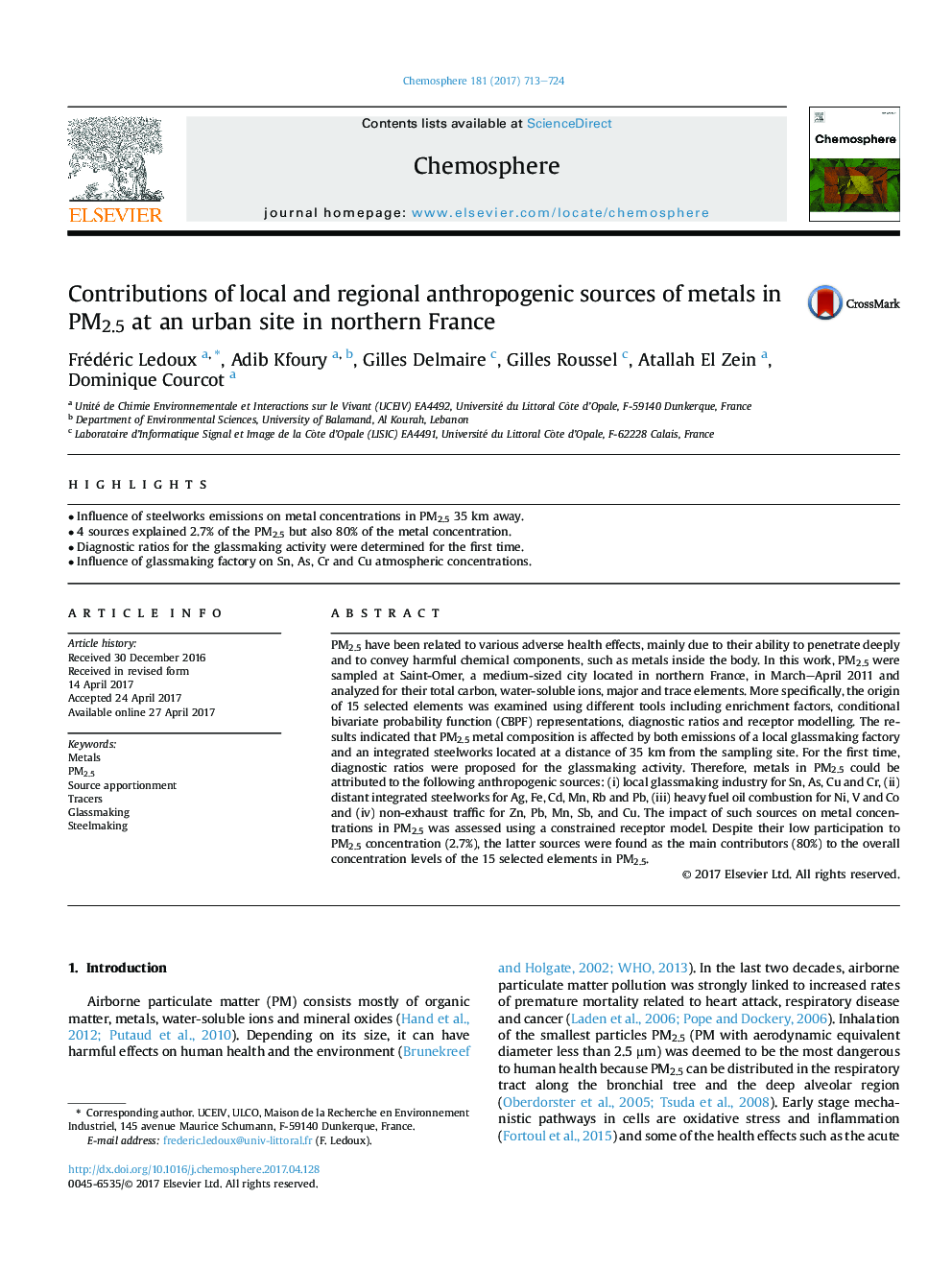| کد مقاله | کد نشریه | سال انتشار | مقاله انگلیسی | نسخه تمام متن |
|---|---|---|---|---|
| 5747210 | 1618790 | 2017 | 12 صفحه PDF | دانلود رایگان |

- Influence of steelworks emissions on metal concentrations in PM2.5 35Â km away.
- 4 sources explained 2.7% of the PM2.5 but also 80% of the metal concentration.
- Diagnostic ratios for the glassmaking activity were determined for the first time.
- Influence of glassmaking factory on Sn, As, Cr and Cu atmospheric concentrations.
PM2.5 have been related to various adverse health effects, mainly due to their ability to penetrate deeply and to convey harmful chemical components, such as metals inside the body. In this work, PM2.5 were sampled at Saint-Omer, a medium-sized city located in northern France, in March-April 2011 and analyzed for their total carbon, water-soluble ions, major and trace elements. More specifically, the origin of 15 selected elements was examined using different tools including enrichment factors, conditional bivariate probability function (CBPF) representations, diagnostic ratios and receptor modelling. The results indicated that PM2.5 metal composition is affected by both emissions of a local glassmaking factory and an integrated steelworks located at a distance of 35Â km from the sampling site. For the first time, diagnostic ratios were proposed for the glassmaking activity. Therefore, metals in PM2.5 could be attributed to the following anthropogenic sources: (i) local glassmaking industry for Sn, As, Cu and Cr, (ii) distant integrated steelworks for Ag, Fe, Cd, Mn, Rb and Pb, (iii) heavy fuel oil combustion for Ni, V and Co and (iv) non-exhaust traffic for Zn, Pb, Mn, Sb, and Cu. The impact of such sources on metal concentrations in PM2.5 was assessed using a constrained receptor model. Despite their low participation to PM2.5 concentration (2.7%), the latter sources were found as the main contributors (80%) to the overall concentration levels of the 15 selected elements in PM2.5.
Journal: Chemosphere - Volume 181, August 2017, Pages 713-724